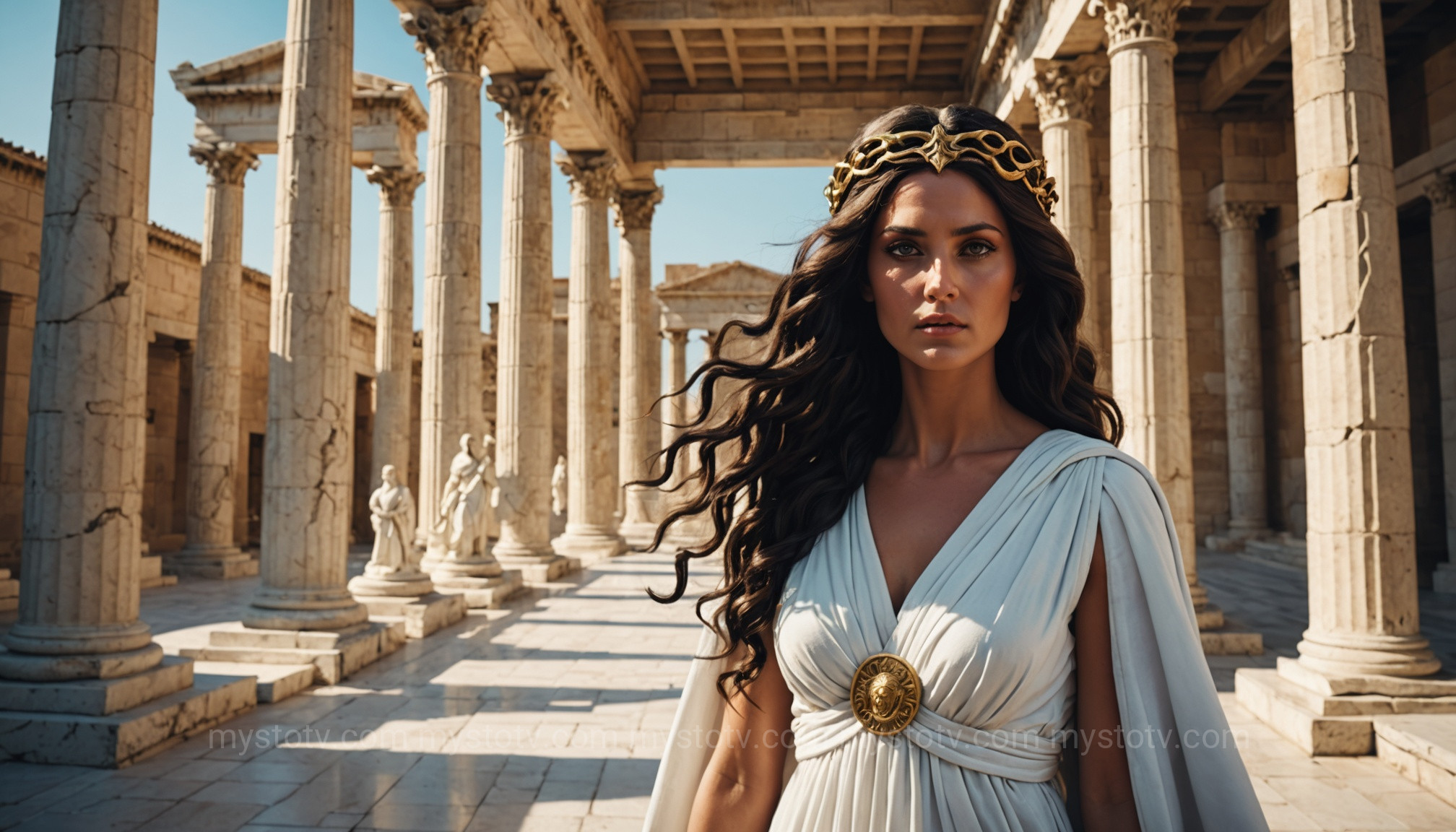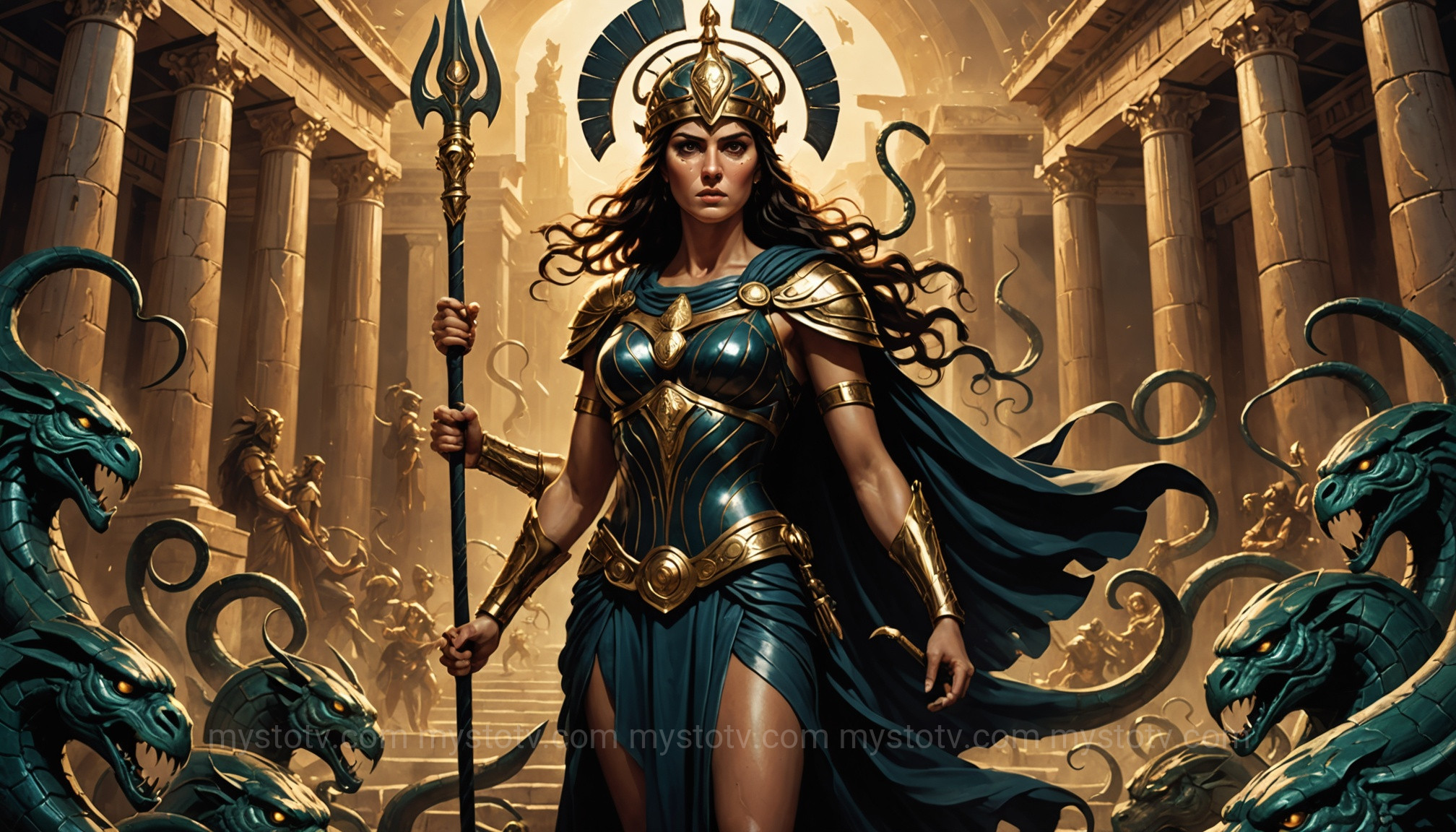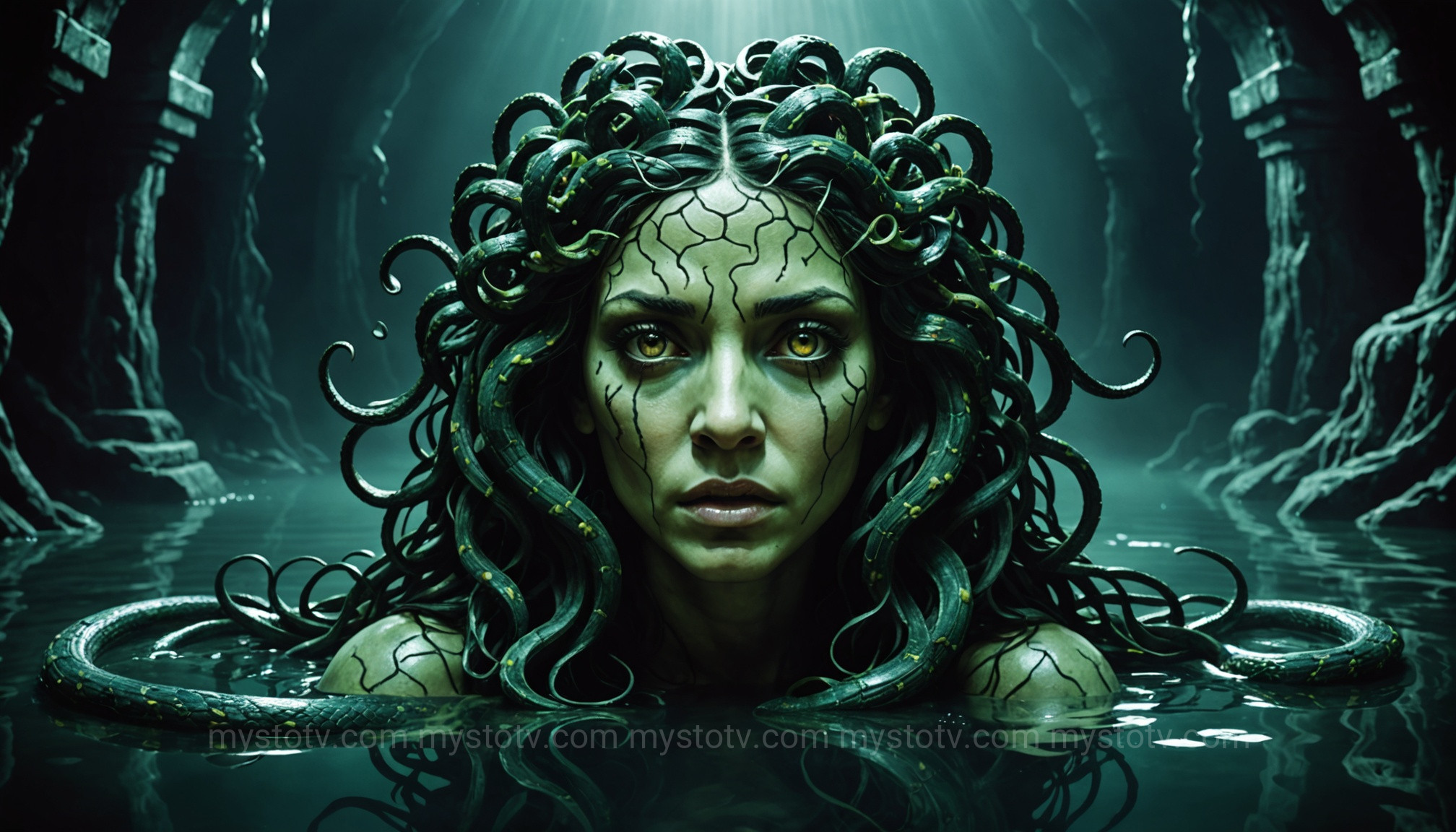Growing up, I only knew Medusa from the movies: a monstrous villain with a head of snakes, a creature for a hero to slay. It was a simple, black-and-white narrative. It wasn't until I studied classical literature that I encountered the far more complex and heartbreaking narrative behind the monster. The version I found there wasn't a story about a hero, but a tragedy about a victim. Unraveling the layers of the story of Medusa and Athena forced me to question everything I thought I knew and to ask a more profound question: in a tale of divine power and mortal suffering, who is the real monster?
Contents
- 1 Deconstructing the Myth: The Original Story of Medusa and Athena
- 2 Athena's Wrath: A Closer Look at the Goddess's Role in the Story of Medusa and Athena
- 3 Medusa's Transformation: Victimhood and Monstrosity in the Story of Medusa and Athena
- 4 The Verdict: Who Was the Real Monster in the Story of Medusa and Athena?
- 5 FAQ: Unpacking the Story of Medusa and Athena
- 6 References
Deconstructing the Myth: The Original Story of Medusa and Athena

To understand the debate, we must first look beyond the pop-culture caricature and examine the most widely cited version of the myth, largely shaped by the Roman poet Ovid in his work, Metamorphoses. Before she was a Gorgon, Medusa was something else entirely.
The Pre-Gorgon Medusa: A Mortal Priestess
In Ovid's telling, Medusa was a mortal woman of breathtaking beauty. Her most celebrated feature was her magnificent hair, which was the envy of many. She was a devout maiden who served as a priestess in the temple of Athena, the goddess of wisdom, warfare, and crafts. Her life was one of piety and service, dedicated to a goddess who demanded chastity from her followers. Medusa's beauty attracted countless suitors, but she remained faithful to her vows and her divine patron.
The Desecration in Athena's Temple
This life of devotion was shattered by the god Poseidon. Enamored by Medusa's beauty, the god of the sea pursued her. Medusa fled, seeking refuge in the very place she felt safest: the sacred temple of Athena. However, the sanctity of the temple did not deter Poseidon. He assaulted her on the floor of the holy sanctuary. This act was a triple violation: an assault on Medusa, a profound act of sacrilege against Athena, and a direct challenge between two powerful Olympian deities, Poseidon and Athena, who already had a history of rivalry.
The Immediate Aftermath: Ovid's Account of the story of medusa and athena
When Athena discovered what had transpired, her reaction was not one of compassion for her defiled priestess. Instead, she was filled with a cold, righteous fury. The goddess could not, or would not, punish the powerful god Poseidon for his transgression. Instead, she directed her full wrath upon the mortal victim. Athena's punishment was cruel and deeply symbolic. She transformed Medusa's most admired feature, her beautiful hair, into a writhing mass of venomous snakes. Her face was contorted into a hideous visage, and her gaze was cursed to turn any living creature that met it into stone. Medusa, the victim, was twisted into a monster and banished to a remote island to live in isolation.
Athena's Wrath: A Closer Look at the Goddess's Role in the Story of Medusa and Athena

Athena’s actions are central to any re-examination of this myth. Was her punishment a justifiable response to the defilement of her sacred space, or was it a monstrous act of victim-blaming? Analyzing her role reveals the uncomfortable power dynamics at play in the Olympian pantheon and offers a chilling perspective on divine justice.
Punishment or Protection? A Feminist Reinterpretation
A modern, feminist reading of the story of Medusa and Athena offers a provocative, alternative interpretation of the goddess's motives. Some scholars and writers propose that the curse was not purely a punishment, but a twisted, dark form of protection. By making Medusa so horrifying that no man could ever look at her again without dying, Athena effectively ensured Medusa would never be violated again. This interpretation doesn't absolve Athena, but it recasts her actions from simple jealousy to a grim, patriarchal solution: rendering a woman "unassailable" by destroying her humanity. It’s a chilling form of "protection" that prioritizes the preservation of chastity over the well-being and identity of the individual.
The Symbolism of the Curse: Snakes and a Stony Gaze
The specific nature of the curse is deeply symbolic. Snakes, in ancient Greece, were complex symbols, representing not only poison and danger but also rebirth, wisdom, and protective power (the Gorgon's head was often used as an apotropaic symbol to ward off evil). By giving Medusa snakes for hair, Athena perverted a symbol of feminine power and turned it into a mark of monstrosity. The petrifying gaze can be seen as a weaponization of the female gaze, turning the "to-be-looked-at" object of desire into an active agent of death. Her curse was a complete inversion of her former self—from an object of beauty to a source of terror.
Athena, the Patriarchal Figure
It is crucial to remember that Athena, despite being a powerful goddess, operated within a deeply patriarchal divine structure. She was born from the head of Zeus, her father, and often aligned herself with male gods and heroes. Her inability or unwillingness to confront Poseidon, a male god of equal or greater standing, and her subsequent punishment of the mortal female, reflects a classic pattern of victim-blaming. In this context, Athena acts as an enforcer of the patriarchal order, punishing the woman for a man's crime to restore the honor of her domain, rather than seeking true justice for her devotee.
Medusa's Transformation: Victimhood and Monstrosity in the Story of Medusa and Athena

Stripped of her beauty, her faith, and her community, Medusa was forced to live out her days as a monster. This part of her story is often glossed over in the hero's journey of Perseus, but it is the heart of her tragedy and a critical element in evaluating her role in the story of Medusa and Athena.
Life as a Gorgon: Isolation and a Deadly Curse
Medusa’s curse was one of profound isolation. Her power was not a gift but a source of perpetual torment. She could not look upon another living thing without destroying it. This meant she could never again experience companionship, friendship, or any form of community. Every bird that flew too close, every creature that wandered into her domain, would be frozen in an eternal monument to her curse. Her existence was a living death, surrounded by the stone figures of those who had accidentally met her gaze. She was a prisoner of her own body, transformed from a pious maiden into a lonely, lethal outcast.
The Hero's Quest: Perseus and the Inevitable End
The final injustice comes with the arrival of the hero Perseus. Notably, his quest to slay Medusa is aided and abetted by none other than Athena. The very goddess who cursed Medusa now assists in her murder. Athena provides Perseus with a mirrored shield to avoid Medusa's gaze, guides his hand, and ultimately takes Medusa’s severed head to mount on her own shield, the Aegis. Medusa's power, born from a curse of unjust punishment, becomes a weapon for her abuser's architect. Her suffering is exploited even in death, a final, grim testament to her complete dehumanization.
Medusa's Enduring Legacy: From Monster to Symbol of Power
Despite the tragedy, or perhaps because of it, Medusa’s legacy is a powerful one. While the ancient world used her image as a symbol to ward off evil, modern interpretations have reclaimed her. Today, Medusa has been embraced by many as a symbol of female rage, a survivor of assault, and a protective icon for women. Her image represents the fury of the wronged and the power that can be found even in monstrosity. This evolution of her story speaks to its enduring relevance. Re-evaluating Medusa as a tragic figure is central to this modern understanding.
The Verdict: Who Was the Real Monster in the Story of Medusa and Athena?
After examining the myth from its origins to its modern interpretations, we can finally return to the central question. While Medusa was transformed into a physical monster, the true monstrosity in the story of Medusa and Athena is not so clear-cut.
The Case Against Athena: Disproportionate Retribution
The case against Athena is damning. Her actions demonstrate a shocking lack of empathy and a terrifying abuse of power. Instead of justice, she delivered disproportionate retribution upon a helpless victim. By punishing Medusa, she upheld a divine order where powerful males are unaccountable for their actions. Her fury, born of violated pride and sacred space, created a monster where there was once a devotee. This act of creating a "monster" out of a victim is arguably more monstrous than the existence of the monster itself.
The Case Against Poseidon: The Catalyst Ignored
It is impossible to have this conversation without indicting Poseidon. He is the catalyst for the entire tragedy. His act of sexual violence and sacrilege sets the horrific events in motion, yet he faces no repercussions in this narrative. He moves on, his power and prestige undiminished, leaving two lives shattered in his wake. His absence from the "punishment" phase of the myth makes him a silent monster, one whose monstrosity is defined by his impunity. The system that allows him to escape justice is as monstrous as any single act.
Re-evaluating Medusa: A Tragic Figure, Not a Monster
Medusa becomes a monster in form, but not in spirit. Her actions as a Gorgon are not born of malice but are an uncontrollable consequence of her curse. She is a figure of tragedy, not of evil. She did not choose her power or her isolation. She is a survivor whose story has been systematically twisted to fit a heroic narrative that required a villain. The real monster is the injustice she suffered—an injustice perpetrated by Poseidon and cemented by Athena.
FAQ: Unpacking the Story of Medusa and Athena
The myth of Medusa is complex, with various interpretations and common questions. Here are a few key points clarified.
Are there other versions of Medusa's myth?
Yes. While Ovid's version is the most famous, earlier Greek writers like Hesiod describe Medusa and her two sisters, Stheno and Euryale, as being born Gorgons—primordial deities from an ancient world. In these earlier tellings, Medusa was the only mortal of the three. Ovid's narrative, which gives her a human backstory and introduces the assault by Poseidon, adds the layers of tragedy and injustice that fuel the modern debate.
Why would Athena punish Medusa instead of Poseidon?
Within the power structure of the Greek gods, a direct confrontation with Poseidon, her uncle and a fellow major Olympian, would have been a significant conflict. Punishing the mortal Medusa was the "easier" path. It allowed Athena to demonstrate her power and re-sanctify her temple without challenging a male peer. This reflects the patriarchal norms of the time, where the female victim of a sexual crime was often seen as "tainted" and bore the social and religious consequences.
What does Medusa symbolize today?
Today, Medusa has been widely reclaimed as a feminist symbol. She represents female rage against injustice and the silencing of victims. For many survivors of sexual assault, her story resonates deeply, transforming her from a monster into an icon of survival and protective fury. The fashion brand Versace uses her head as its logo, symbolizing her power to mesmerize and captivate, a testament to her enduring and complex legacy.
References
- Ovid. Metamorphoses. Book IV, lines 790-803. (c. 8 AD).
- Hesiod. Theogony. Lines 270-280. (c. 700 BC).
- "Medusa & the Gorgons." Theoi Project, a guide to Greek mythology. https://www.theoi.com/Pontios/Gorgones.html
- Garber, Marjorie, and Nancy J. Vickers, editors. The Medusa Reader. Routledge, 2003.
In conclusion, the story of Medusa and Athena serves as a timeless and devastating cautionary tale. It challenges our definitions of "monster" and "hero," revealing that the most terrifying monsters are often not the ones with fangs and claws, but those who wield power without compassion. Medusa was made into a monster, but she was never the villain of her own story. The true monstrosity lies in the divine injustice she endured, a narrative that forces us to look past the stone gaze and see the tragic victim trapped behind it.